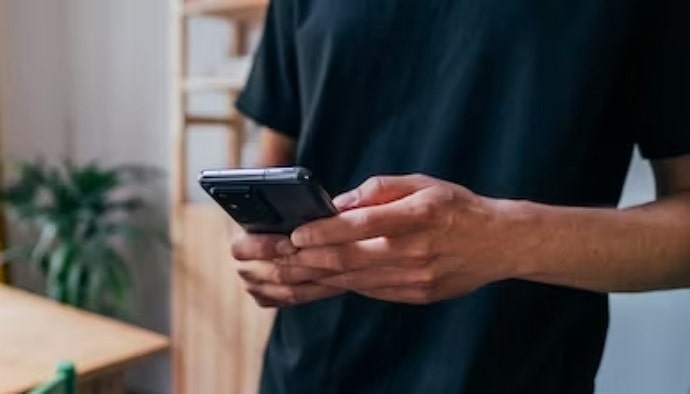In the digital age, communication has evolved dramatically; emails have definitely grown to become the primary mode of conversation when it comes to professional interactions. Whether you’re initiating a new business relationship, collaborating on a project, or simply connecting with a colleague from afar, email is often the first point of contact.

As a result, it’s crucial to respond thoughtfully and professionally to common email greetings. “Nice to e-meet you” is one such salutation that has gained popularity in our virtual world.
In this article, we will explore the best replies to the “Nice to e-meet you” email, emphasizing the importance of building rapport, professionalism, and effective communication in the virtual realm. Let’s get started!
Best Replies to “Nice To E-Meet You” Email
Receiving an email that says “Nice to e-meet you” is a great way to start a new professional relationship. It shows that the person is interested in getting to know you and learning more about what you have to offer.
When you reply to an email that says “Nice to e-meet you,” it’s important to make a good impression. You want to be professional, polite, and enthusiastic. You should also try to learn more about the person and what they’re interested in.
Express Your Appreciation
A simple and courteous response to “Nice to e-meet you” is to express your appreciation. You can reply with, “Likewise, I appreciate the opportunity to connect with you.” This response acknowledges the greeting and conveys your gratitude for the introduction. It sets a positive tone for the beginning of your virtual relationship.
Reciprocate the Sentiment
A warm and reciprocal response can help build rapport. You can say, “Thank you! I also look forward to getting to know you better.” This reply shows that you are eager to engage and establish a connection with the person on the other side of the screen.
Share Your Enthusiasm
Expressing enthusiasm can make your response more engaging. You can reply with, “I’m excited to e-meet you too!” This response adds a touch of energy and positivity to your email, conveying your eagerness to start a meaningful virtual interaction.
Extend a Welcome
If you want to create a welcoming atmosphere, you can say, “Thank you! I’m here to help, so feel free to reach out anytime.” This response not only acknowledges the greeting but also extends a helping hand and reassures the recipient that you are approachable and ready to collaborate.
Mention Common Interests or Goals
To establish a connection and find common ground, consider mentioning shared interests or goals. For example, “Thank you! I noticed we share an interest in [insert common interest], so I’m looking forward to discussing that further.” This response shows that you have taken the time to learn more about the recipient and are eager to engage on topics of mutual interest.
Share Your Background
In professional contexts, it can be helpful to provide a brief introduction to your background or role. You can say, “Thank you! I work in [mention your field or role], and I’m excited to collaborate with you.” This response adds context to your email and helps the recipient understand your role and how you can contribute to the interaction.
Offer Assistance
If you want to demonstrate your willingness to be helpful, you can say, “Thank you! If you have any questions or need assistance with anything, please don’t hesitate to ask.” This response not only acknowledges the greeting but also extends a proactive offer of support, which can be especially valuable in professional relationships.
Mention Shared Connections
If you have mutual contacts or connections, mentioning them can help establish trust and credibility. For instance, “Thank you! I’ve heard great things about you from [mutual contact’s name], and I’m excited to connect.” This response not only acknowledges the greeting but also leverages the power of referrals to build a positive impression.
Highlight Your Goals for the Interaction
To set clear expectations and objectives, you can mention your goals for the upcoming interaction. For example, “Thank you! I’m looking forward to our collaboration and achieving [mention your goals or objectives].” This response shows that you are forward-thinking and focused on the potential outcomes of your interaction.
Request More Information
If you want to initiate a conversation and learn more about the recipient, you can say, “Thank you! I’d love to learn more about your role and goals. Could you share a bit about what you do?” This response not only acknowledges the greeting but also encourages a dialogue and deeper understanding of the other person.
Keep It Professional
Maintaining professionalism in your response is essential, especially in a professional or business context. A reply like, “Thank you! I appreciate the introduction and look forward to our collaboration,” maintains a formal tone and demonstrates respect for the professional nature of the interaction.
Be Mindful of Tone
Tone can be challenging to convey through written communication, so it’s important to be mindful of how your response might be perceived. Avoid overly casual or informal language unless the context explicitly calls for it. A balance between professionalism and warmth is usually a safe approach.
Proofread Your Response
Before hitting send, take a moment to proofread your response. Check for spelling and grammatical errors to ensure your email is well-crafted and free of mistakes. A well-written response reflects positively on your professionalism and attention to detail.
Tailor Your Response to the Situation
Consider the specific context and purpose of your interaction when crafting your reply. If you’re responding to a new colleague, your reply might be different from how you respond to a potential client or collaborator. Tailoring your response to the situation shows that you are thoughtful and considerate.
Keep it simple
A simple “Thank you for your email. It was nice to e-meet you as well!” is perfectly sufficient. Be specific. If you know anything about the person or their work, mention it in your reply. This shows that you genuinely care and want to know the person.
Also Read:





 Bitcoin
Bitcoin  Ethereum
Ethereum  Tether
Tether  XRP
XRP  Solana
Solana  USDC
USDC  Dogecoin
Dogecoin  Cardano
Cardano  TRON
TRON